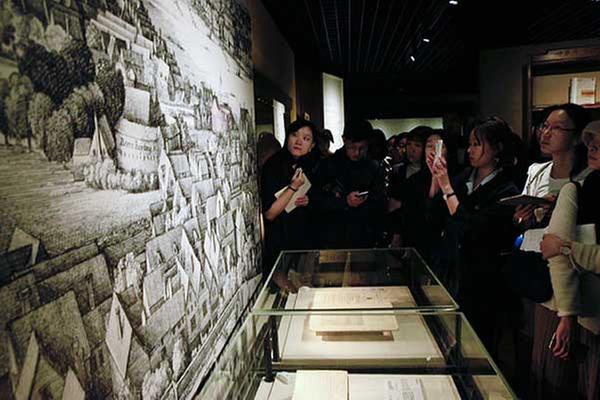Romance of words
By Mei Jia | China Daily | Updated: 2017-05-12 07:14
 |
| Shakespeare to Sherlock: Treasures of the British Library at Beijing's National Library of China is a showcase of iconic British literary works.[Photo by Jiang Dong/China Daily] |
An early edition of Romeo and Juliet is part of a stunning collection of treasures the British Library has brought to China. Mei Jia reports.
The 1599 quarto edition of Romeo and Juliet, once owned by King George III, is exceptionally rare: When it was printed, William Shakespeare was still alive and the play had already debuted. This version could well be the most accurate and closest to the Bard's original.
William Wordsworth's manuscript of his poem Daffodils includes handwritten notes the romantic master gave to the printer about where to place the verse.
Those are two of the 11 precious exhibits that are touring China for the first time, in a special exhibition of British literary masters - Shakespeare to Sherlock: Treasures of the British Library - at the National Library of China.
The exhibition, jointly organized by the national library and the British Library, runs through June 21.
"We chose works that are iconic in Britain, and are also known, liked and well-understood by Chinese," says Alexandra Ault, curator of the exhibition.
Her British Library colleague Jamie Andrews says: "We want to make a new partnership, a new friendship in China through culture and learning. There is no better way to do it than through English literature."
At the exhibition, the Shakespearean classic is shown side by side with a Ming Dynasty (1368-1644) copy of The Peony Pavilion, by the Bard's Chinese contemporary playwright Tang Xianzu.
Tessa Blackstone, chairman of the British Library Board, says she feels strong cultural links between the two countries, which "convey a sort of universality of literature", is a way of communicating our feelings, expressing our ideas and developing our humor or even creating tragedies.
The nine manuscripts and two early specimens of the British masters share the stage with 119 Chinese items, including key Chinese translations, adaptations and critical responses in categories of poetry, dramas and novels.
Lei Qiang, curator of the Chinese exhibits, is the one who suggested that a copy of Charles Dickens' David Copperfield be included in the exhibition because Chinese readers it know much better than the previously planned Nicholas Nickleby.
From the national library's rich collections, there are translations of Dickens' works by Lin Shu from the turn of the 20th century, as well as works by writers like Lao She, who has been influenced by Dickens' depiction of people of various social status.
























